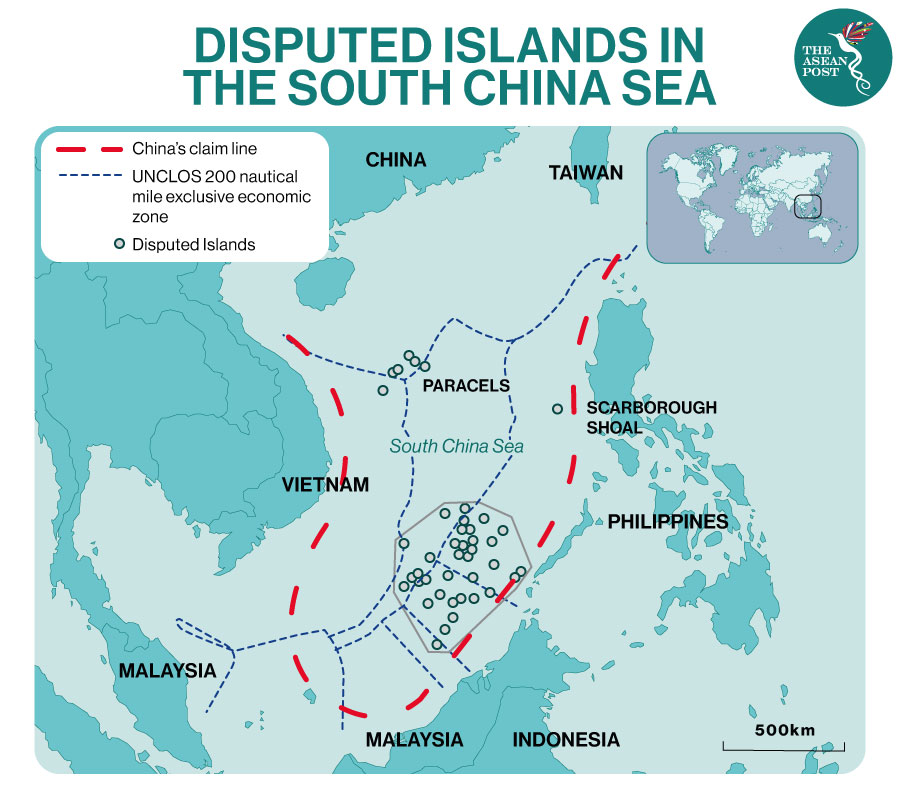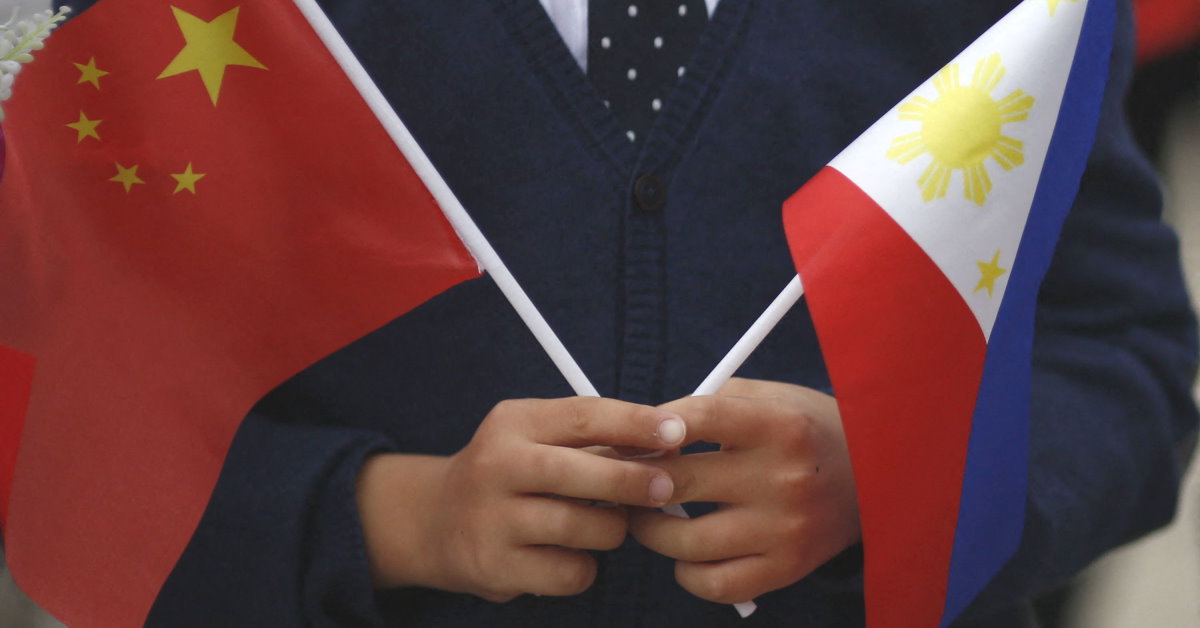Time and again, the deceptive and misleading “Chinese Threat” rhetoric has been hyped-up by the political detractors of the Duterte administration and by some mainstream media outlets; capitalising on the current skirmish in the South China Sea (SCS) involving the alleged more than 200 Chinese fishing vessels spotted in the Whitsun Reef or commonly known to Filipinos as the Julian Felipe Reef.
One of the obvious reasons is to discredit President Rodrigo Duterte’s “rapprochement” policy towards China. This is to a considerable extent being fuelled by local politics given that the 2022 national elections are around the corner.
“Rapprochement” in international relations, which comes from the French word “rapprocher”, refers to the re-establishment of cordial relations between two countries, which Duterte pursued with China upon ascending to the office of the presidency in 2016, abandoning the previous administration’s not only antagonistic relations and stance but pro-American leaning.
To note, the Duterte administration pursued an independent foreign policy of being enemy to none but a friend to all nations.
Hawkish Sensationalised News
Aside from fearmongering, fake and sensationalised news peddled by some media outlets to further inflame the impasse in the SCS has caused not only confusion among Filipinos but triggered unnecessary commotion and anxieties.
One of the sensationalised news was the somewhat hawkish reporting by an ABS-CBN reporter named Chiara Zambrano on 9 April on the ABS CBN news website with the headline, “Filipino Vessel Chased Down by 2 Chinese Missile Attack Craft in West PH Sea.”
The said news report purported that the ABS-CBN television crew was traveling to the contested Spratly Islands when their vessel was allegedly chased by two Chinese missile attack boats. The news report also stated that a Filipino civilian vessel with the ABS-CBN news team aboard was traveling across various reefs and shoals in the West Philippine Sea, close to the mainland of Palawan to interview Filipino fisherfolks.
The news caused unnecessary alarm among government officials particularly those from the Department of National Defense (DND) and the Armed Forces of the Philippines (AFP). According to AFP Spokesperson Major General Edgard Arevalo, “the AFP expresses concern over the report of alleged harassment by Chinese PLA Navy vessels and a Chinese Coast Guard vessel as reported by a team of journalists on board a watercraft within our EEZ (exclusive economic zone). Through the AFP's Western Command (WESCOM), we are conducting investigation and verifications to establish what transpired.”
In retrospect, the results of the AFP/DND investigation proved that the news piece explicated half-truths. The result of the investigation on the incident in the West Philippine Sea (WPS) involving Zambrano, which was explained and clarified thoroughly by Secretary Salvador Panelo, the Chief Presidential Legal Counsel of President Duterte in his media program “Counterpoint,” clarified that:
1. Ms. Zambrano failed to inform WESCOM of their trip to the Southern Banks.
2. M/L Queen Sima, the boat hired by Ms. Zambrano is classified as a passenger vessel and it is not authorised to go to the WPS. Ms. Zambrano and her cameraman were only permitted to join a navy resupply ship to the Philippine islands in the WPS on 9 April where AFP detachments are located and not to the said area in the SCS or WPS on her own aboard a rented boat. To note, there’s no passenger route from Bataraza (a municipality in the province of Palawan, Philippines) to the Southern Banks.
3. The captain of M/L Queen Sima did not file the required documentation to the Philippine Coast Guard Station before departing Bataraza.
4. It is a standard operating procedure to challenge unidentified vessels in the area, both by the Philippines and Chinese Coast Guard (CCG). It was not meant to be a “threat” but a query for their identity and a reminder that they have entered the disputed territory.
5. The Captain of the M/L Queen Sima did not respond to the query and instead told the CCG that they were turning back.
6. The two (2) Chinese missile boats were not chasing but escorting the M/L Queen Sima out of the area, whose captain failed to respond and comply with the standard operating procedure.
7. Ms. Zambrano said she was going to the Southern Banks only to interview fishermen. After the interview, they could have left and proceeded back to Palawan but they lingered and went to a disputed area where there are no fishermen. It begs the question that Ms. Zambrano intended to find the CCG to sensationalise her story. Also, she never included in her report the interview with only one fisherman.
Peaceful Resolution
Nevertheless, amidst all the hullabaloo on the recent skirmish in the disputed waters of the SCS, the Philippine government has time and again expressed that it is resolving the impasse through various diplomatic channels and peaceful means capitalising on the friendly and closer ties between China and the Philippines under Duterte’s leadership.
Presidential Spokesperson Harry Roque expressed in one of his press briefings a few days back that the Philippine President is committed to peacefully resolving the diplomatic row with China over the disputed SCS. "We will continue to resolve the issues on Julian Felipe through diplomatic channels and peaceful means," Roque said.

Hindsight And Perspective
Indeed, the recent stand-off in the contested water of the SCS involving the Philippines and China once again has presented a choice between conflict or cooperation – which is the peaceful resolution of the current impasse through diplomacy and constructive engagement with China on the part of the Philippines. Duterte prefers peaceful and diplomatic resolution over conflict with China and opts for continued friendly cooperation. This is thus far a pragmatic stance, which is important for economic stability and the survival of the country, especially now more than ever, given the country’s battle with the novel coronavirus pandemic.
On the other hand, while the Philippine government pursues a bilateral constructive engagement with China in resolving differences and asserting its territorial and maritime rights through diplomatic and peaceful means, it also continuously works with ASEAN member states on the “China-ASEAN South China Sea Code of Conduct (COC).” The COC is important for it seeks to manage inter-state relations within the SCS area and addresses disputes over territorial claims in the contested waters. Indeed, now more than ever, the COC becomes more imperative given the tension-driven atmosphere in the SCS.
Multilateral regional settings like ASEAN are critical in dispute resolution for they have a strong norm-setting mechanism in institutionalising pleasant and amicable relations among geographically adjacent states. This institutional approach performs a complementary function to the bilateral talks and negotiations between China and the Philippines over the disputed SCS.
However, irresponsible journalism like the news piece authored by Zambrano could have possibly placed the country on the brink of war with China if the current administration did not subject the incident in question to a thorough investigation.
Conclusion
Skirmishes among claimant-states in the SCS like the current impasse involving China and the Philippines are not something new. These kinds of skirmishes happen precisely because the SCS has been a disputed area for a long time. What’s important is the fact that no serious military confrontations tantamount to war have happened and this is the most important thing to take note of and to avoid by all parties concerned.
On the part of the Philippines, it needs to look at the bigger picture. It has more pressing issues and challenges it needs to contend with at the moment like the COVID-19 pandemic, poverty, and development needs of the country that require more cooperation with countries it has friendly relations with like China rather than focus on divisions and conflicts.
The country’s differences with China over the disputed waters of the SCS is just a small part of its bilateral relations with China. Thus, the Philippines should focus on the positive aspects of that bilateral relationship which brings real and tangible economic benefits to the country, while actively resolving its differences with China through diplomacy and dialogue at all levels possible.
Related Articles:
Philippines: Occupation/Invasion Or Exaggeration?
Philippines: Is China A Friend In Times Of Need?

